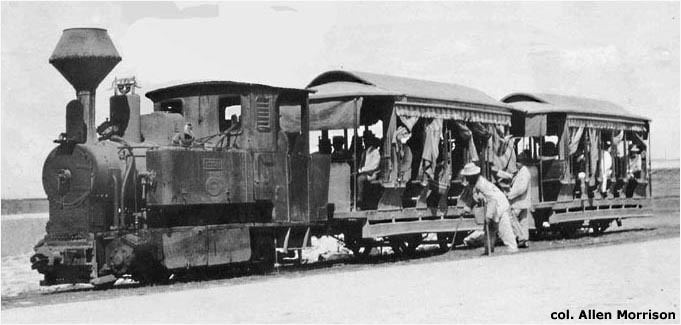 | ||
The history of rail transport in Haiti began in 1876, with the opening of a horse drawn street tramway. Rural railways were constructed later. Haiti has never had any rail connections with the neighbouring Dominican Republic. All rail transport in Haiti had ceased operating by about the 1970s.
Contents
Horse tramways
In 1876, a franchise for the construction of a street railway in Port-au-Prince was awarded to a group of New York City financiers. They founded the Compagnie des Chemins de Fer de Port-au-Prince (CCFPP). Six open cars were ordered from J. G. Brill and Company of Philadelphia in 1877 and a tramway service connecting Croix des Bossales with Champ de Mars began in 1878. The venture was initially successful but was hit by competition from buses from 1880. The CCFPP went bankrupt in 1885 and the last tram ran in 1888.
Steam railways
In 1896, the Comite des Negociants d'Haiti began to restore the closed tramway system and to build two new rural lines. A new company, Societe des Tramways de Port-au-Prince, ordered the following equipment:
Port-au-Prince
Steam-hauled tram services in Port-au-Prince began in April 1897. Between 1912 and 1918 there were plans to electrify the system but these did not come to fruition. Instead, a small railcar, based on automobile parts, was introduced. The tramway closed in 1932.
Rural lines
The rural lines were operated by a separate company, Compagnie des Chemins de Fer de la Plaine du Cul-de-Sac (CCFPCS) but the two companies shared their rolling stock. The track gauge, in both cases, was 2 ft 6 in (762 mm) narrow gauge. There were two routes:
Following the US occupation of Haiti in 1915 the CCFPCS was taken over by the Haitian American Sugar Company (Hasco) and renamed Chemin de Fer Central. Hasco used the following locomotives:
These might possibly be the three locomotives from Ateliers de Tubize (see above) or they might be new locomotives. The 0-4-0 carries the note "Cie.H.Duw. 2" but whether this is the name of the maker, or of a previous owner, is unclear.
Saint-Marc line
In 1905, a new company, Compagnie Nationale, built a 3 ft 6 in (1,067 mm) narrow gauge steam railway from Port-au-Prince to Saint-Marc (100 km). The track was later extended another 30 km east to Verrettes. There was also a line from Cap-Haïtien to Bahon but it is unclear whether this connected with the Saint-Marc line and whether they were of the same gauge.
Industrial railways
As well as the passenger-carrying railways, there were also industrial railways serving coffee and sugar plantations.
Closures
In the mid-1950s there were two public-service railways totalling 187 mi (301 km) still operating. All the railways are now closed and closure dates are unknown.
